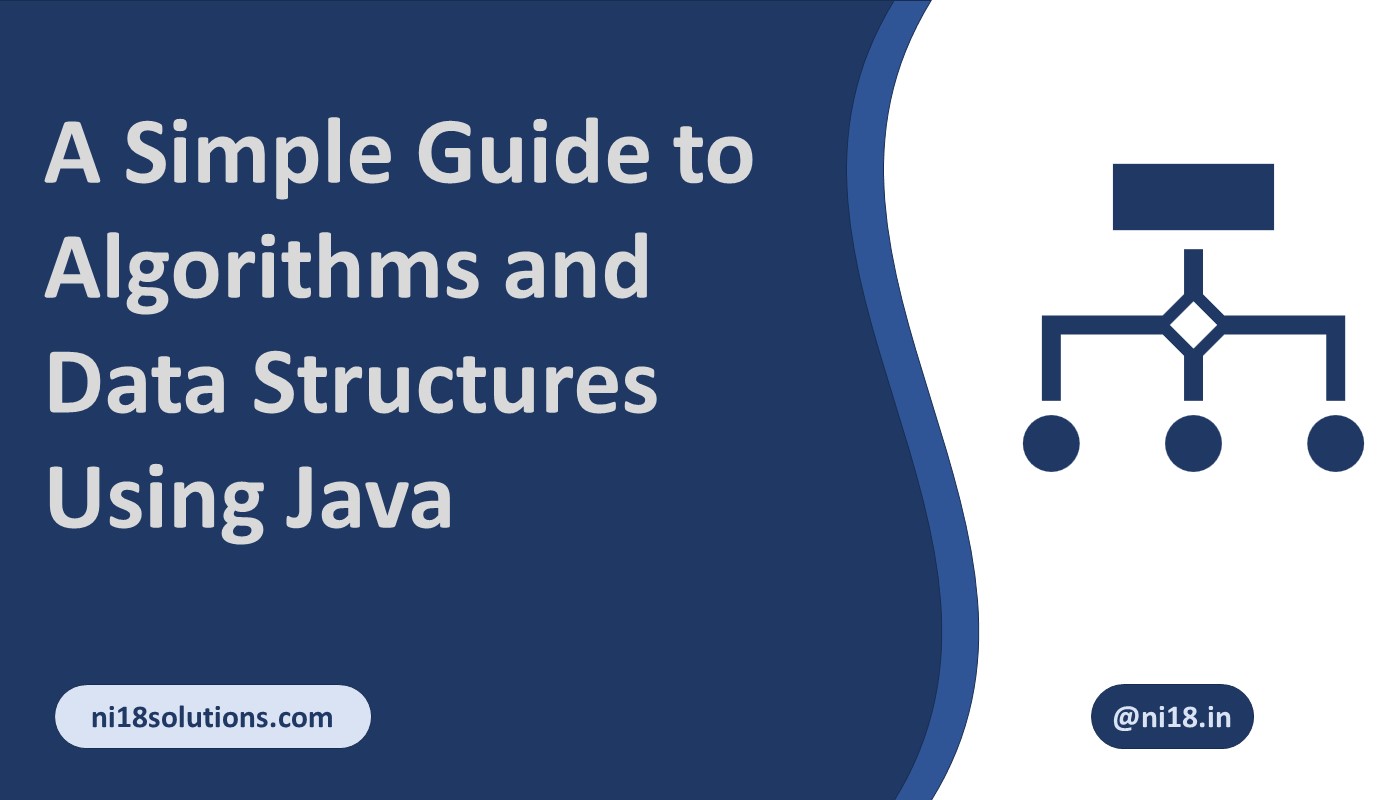Hello, young coders! Today, we’re going to embark on an exciting journey into the world of Algorithms and Data Structures using Java. Don’t worry if you’re new to this; we’ll take it slow and make sure everything is as clear as a sunny day!
Table of Contents
What are Algorithms?
An algorithm is a set of instructions designed to perform a specific task. It’s like a recipe for baking a cake or directions to the nearest park. In computer science, algorithms are used to solve problems and execute tasks in the most efficient way.
What are Data Structures?
A data structure is a particular way of organizing data in a computer so that it can be used effectively. Think of it like different types of containers in your kitchen. You might use a jar for cookies, a fridge for fruits, and a cupboard for dishes. Each container is a different structure for storing items.
Why Java?
Java is a popular programming language known for its ‘Write Once, Run Anywhere’ capability. This means you can write your code once and run it on any device that supports Java, without needing to change the code!
Algorithms in Java
Let’s start with a simple algorithm in Java – the Bubble Sort. It’s a simple sorting algorithm that repeatedly steps through the list, compares adjacent elements, and swaps them if they are in the wrong order.
void bubbleSort(int arr[]) {
int n = arr.length;
for (int i = 0; i < n-1; i++)
for (int j = 0; j < n-i-1; j++)
if (arr[j] > arr[j+1]) {
// swap arr[j+1] and arr[j]
int temp = arr[j];
arr[j] = arr[j+1];
arr[j+1] = temp;
}
}
Data Structures in Java
Now, let’s look at a basic data structure in Java – the Array. An array is a container object that holds a fixed number of values of a single type.
int[] myArray = new int[10]; // This is how we declare an array in Java.
myArray[0] = 1; // This is how we assign values to an array.More Algorithms in Java
Binary Search
Binary Search is a search algorithm that finds the position of a target value within a sorted array. It compares the target value to the middle element of the array and eliminates half of the array from further consideration.
int binarySearch(int arr[], int x) {
int l = 0, r = arr.length - 1;
while (l <= r) {
int m = l + (r - l) / 2;
if (arr[m] == x)
return m;
if (arr[m] < x)
l = m + 1;
else
r = m - 1;
}
return -1;
}More Data Structures in Java
LinkedList
A LinkedList is a linear data structure where each element is a separate object. Each element (we call it a node) of a list is comprising of two items – the data and a reference to the next node.
public class Node {
int data;
Node next;
Node(int d) {
data = d;
next = null;
}
}HashMap
HashMap in Java is a part of the java.util package. It provides the basic implementation of Map interface of Java. It stores the data in (Key, Value) pairs.
HashMap<String, Integer> map = new HashMap<>();
map.put("vishal", 10);
map.put("sachin", 30);
map.put("vaibhav", 20);| Category | Algorithm/Data Structure | Description | Example Usage |
|---|---|---|---|
| Sorting | Bubble Sort | Simple sorting algorithm that repeatedly steps through the list, compares adjacent elements, and swaps them if they are in the wrong order. | Sorting an array of integers or strings. |
| Selection Sort | Sorts an array by repeatedly finding the minimum element from the unsorted part and putting it at the beginning. | Sorting a list of objects based on a specific property. | |
| Insertion Sort | Builds a sorted array one element at a time by repeatedly taking the next element and inserting it into the correct position in the already-sorted part. | Sorting small arrays or nearly sorted arrays efficiently. | |
| Merge Sort | Divide and conquer algorithm that divides the array into two halves, sorts them, and then merges the sorted halves. | Sorting large arrays or linked lists efficiently. | |
| Quick Sort | Partitioning algorithm that selects a ‘pivot’ element and partitions the array around the pivot, then recursively sorts the sub-arrays. | Efficient sorting for large arrays and data sets. | |
| Searching | Linear Search | Sequentially searches for a given element in an array or list, checking each element until a match is found or the entire array is traversed. | Searching for an element in an unsorted array. |
| Binary Search | Searches a sorted array by repeatedly dividing the search interval in half until the target element is found or the interval is empty. | Searching for an element in a sorted array efficiently. | |
| Depth-First Search (DFS) | Traverses a graph or tree by exploring as far as possible along each branch before backtracking. | Graph traversal, cycle detection, topological sorting. | |
| Breadth-First Search (BFS) | Explores all neighbor nodes at the present depth prior to moving on to nodes at the next depth level. | Shortest path finding, minimum spanning tree, network flow. | |
| Data Structures | Array | Linear data structure that stores elements of the same type in contiguous memory locations. | Storing and accessing elements in a collection. |
| Linked List | Collection of nodes where each node contains a data field and a reference to the next node in the sequence. | Implementing stacks, queues, adjacency lists, etc. | |
| Stack | Collection of elements with two main operations: push (adds an element to the top) and pop (removes the top element). | Expression evaluation, backtracking algorithms, undo mechanisms. | |
| Queue | Collection of elements that supports two main operations: enqueue (adds an element to the rear) and dequeue (removes the front element). | Implementing BFS, scheduling algorithms, etc. | |
| Hash Table | Data structure that implements an associative array abstract data type, where keys are mapped to values. | Storing and retrieving data with fast lookups. | |
| Tree | Hierarchical data structure consisting of nodes connected by edges, with a single node designated as the ‘root’ and each node having a parent and zero or more children. | Representing hierarchical data, searching, indexing. | |
| Graph | Non-linear data structure consisting of a finite set of nodes (vertices) and a set of edges connecting them. | Modeling networks, social networks, routing algorithms. |
Conclusion
Algorithms and data structures are fundamental concepts in computer science that help us solve complex problems efficiently. By understanding and using them effectively, we can write better and more efficient code. So keep practicing, keep coding, and remember – every great coder started out as a beginner!











2 thoughts on “Algorithms and Data Structures Using Java”